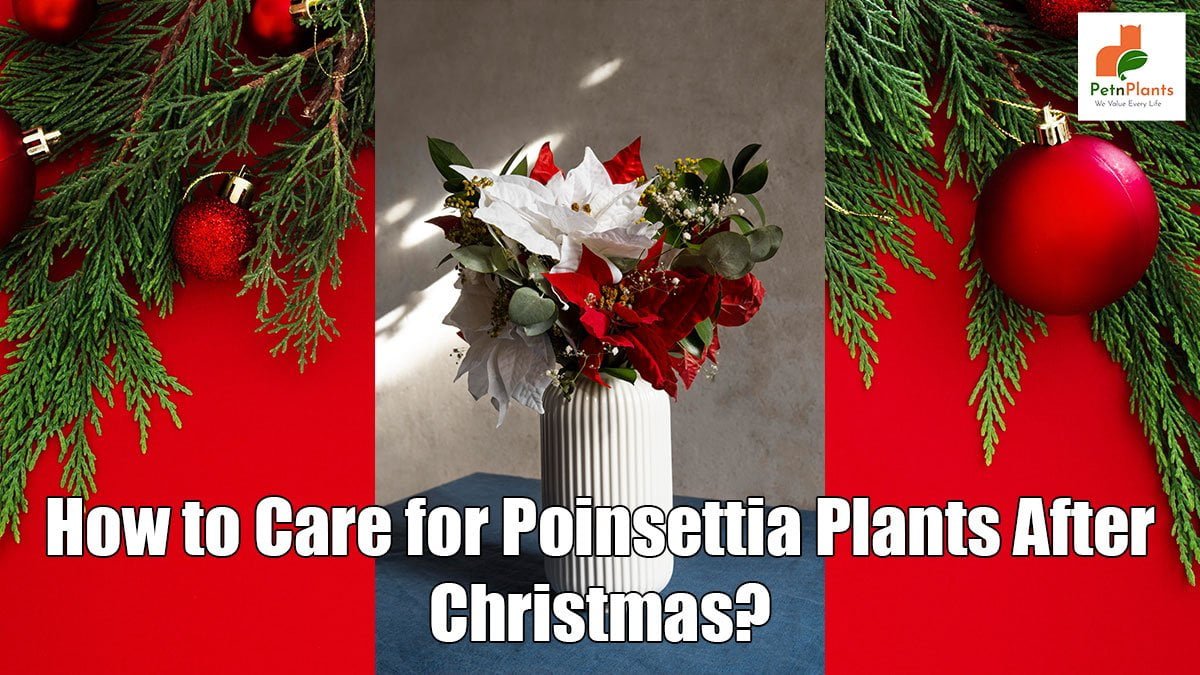How To
Latest
Pet Care
How to Groom Your Dog at Home with the Right Dog Grooming KitMarch 19, 2025
We Value Every Life

Christmas is over, and you’re left with a beautiful poinsettia plant. But what do you do with it now? How can you keep this plant alive and thriving all year round? This blog post will explore how to care for your poinsettia plant after the holiday season. From water to light exposure and more, we will give you all the tips and tricks you need to keep your plant healthy and happy.
Poinsettia plants are a popular Christmas decoration, but many people don’t know how to care for them once the holidays are over. If you want your poinsettia to last more than a few weeks, there are a few things you need to do.
To keep your poinsettia looking its best, water it when the top 2-3 inches of soil are dry. Allow the water to soak in until it begins draining out the pot’s bottom, then empty any excess water. Poinsettias prefer to be drier, so be sure not to overwater. Fertilize your poinsettia every 2-4 weeks with a balanced fertilizer.
Poinsettias are native to Mexico and Central America, growing in the wild. In their natural habitat, they would receive nutrients from the decomposing leaves of other plants. Growing as houseplants need to be fertilized every two to four weeks with a balanced fertilizer containing nitrogen, phosphorus, and potassium. During the blooming season (November-January), you can use a higher phosphorus fertilizer to encourage flower production.
Poinsettias are tropical plants that originated in Mexico. They require a minimum of six hours of direct sunlight each day to thrive. However, if they are not getting enough light, they will become leggy, and their leaves will turn yellow. If you live in an area with limited sunlight, you can supplement the light by placing your poinsettia near a south-facing window.
“Poinsettias are tropical plants, so they require warm temperatures to thrive. The ideal temperature range for poinsettias is 60-70 degrees Fahrenheit during the day and 55-60 degrees Fahrenheit at night. If the temperature drops below 50 degrees Fahrenheit, the leaves will turn yellow and fall off, and if the temperature gets too high, the leaves will wilt.”
Humidity is important for poinsettias, especially during the winter months when the air is dry. The ideal humidity level for poinsettias is 60%. You can increase the humidity around your poinsettia by grouping plants together, using a humidifier, or placing the plant on a pebble tray.
If the air around your poinsettia becomes too dry, the leaves will turn brown and drop off. To prevent this, make sure to mist your plant regularly and keep an eye on the humidity level in your home.
Poinsettias are generally tough and resilient, but like all plants, they can be susceptible to pests and diseases. The most common problems with poinsettias are aphids, mealybugs, whiteflies, and root rot.
Aphids are small, soft-bodied insects that feed on the sap of plants. They can cause stunted growth and distorted leaves. Mealybugs are small, white pests that suck the sap out of plants and can cause leaves to turn yellow and drop off. Whiteflies are small flies that live on the undersides of leaves. They feed by sucking the sap out of the plant, which can cause leaves to turn yellow and eventually drop off. Root rot is a fungal disease that attacks the roots of plants. It can cause the plant to wilt and die.
There are several things you can do to prevent or control these pests and diseases:
Poinsettias are one of the most popular Christmas plants. They are relatively easy to care for, but there are a few things you need to know to keep them looking their best. One of the most common questions is how to propagate poinsettias.
Here is a step-by-step guide on how to propagate poinsettias:
After Christmas, many people wonder how to care for their poinsettia plants. With a little TLC, your poinsettia can thrive long after the holidays. Here are a few tips on how to care for your poinsettia plant: Keep the plant in a bright location but out of direct sunlight. -Water the plant when the soil is dry to the touch. Fertilize monthly with a general-purpose fertilizer. -Pinch back stems to encourage compact growth. With these simple tips, you can keep your poinsettia plant healthy and beautiful for years.
0